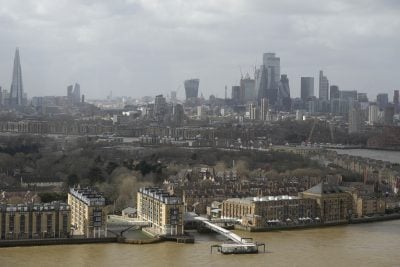Ethiopia is a paradise for a tourist who loves history or dramatic landscapes: it has some of the best of both in the world.
The nurturing Rift Valley is one of the cradles from which early humans spread from Africa into the rest of the world.
Ethiopia is one of the world’s oldest countries. Its former emperors trace their line back to a union between the Queen of Sheba and King Solomon, and the succession continued until the end of imperial rule in 1974 and the murder of Haile Selassie.
Sites in northern Ethiopia had strategic and trading influence in the ancient world from as early as 3500 BC and exports from the Land of Punt could have included gold, ivory and myrrh.
By 2000 BC there were strong ties and trade across the Red Sea into southern Arabia and this could have been the time when Ge’ez, which forms the basis for Amharic writing, developed.
A great civilisation arose from around 1000–400 BC and there are remains of large stone temples, tombs and dwellings at Yeha, thought to be Ethiopia’s first capital.
Kingdom of Axum
One exciting site for visitors is Axum in the far north, a kingdom which arose from 500 BC. Fertile lands were watered by well-designed dams, wells and reservoirs.
At its height (200–600 AD), Aksum reached into southern Arabia and west into the Sudanese Nile Valley. A field of dramatic stelae, or giant carved standing stones, indicate the art and engineering skills.
Ethiopia was also one of the first countries to accept Christianity, when King Ezana made it the official religion around 320–340 AD.
However, the country is also home to key Muslim sites, including the oldest mosque, built after 615 AD, when Prophet Mohammed sent followers, his daughter and son-in-law and future successor, to the Christian king in Ethiopia for protection and to avoid persecution in Arabia. The atmospheric eastern walled city of Harar is another revered Muslim holy place.
Ethiopia has stunning old churches and holy places, including monasteries perched atop vertiginous mountain crags.
In 1137–1270 AD, the Zagwe dynasty established a new capital near Lalibela and built one of the most amazing sites in the world, the ‘New Jerusalem’ of 13 rock-hewn churches, carved out of solid rock in full size, with full functionality and dazzling stone carvings and painting.
Services continue to this day, often starting before dawn and they are a site of pilgrimage and worship. It is an unforgettable tour and makes the story that construction was only possible with the help of angels seem more credible.
Other key historical spots include the castles at Gondar, giving glimpses of court life from 400–500 years ago, and Lake Tana, a huge lake dotted with serene islands on which monks continue centuries of study and contemplation.
Ethiopia’s proud history includes the mobilising and maintaining of a large army in northern Ethiopia when Italians invaded in the 19th century, part of a European rush to colonise Africa.
The Italians were resoundingly defeated at the Battle of Adwa in 1896 and Ethiopia remained free. Emperor Menelik II went on to lead extensive modernisation, including founding the modern capital, Addis Ababa in 1886 (prompted by his wife who preferred it to the cold strategic mountaintop he developed as a capital), introduced electricity and phones, built bridges, schools and hospitals and founded the Djibouti railway, which reached Addis in 1915.
The Italians did not return until 1935, when Mussolini used chemical warfare and aerial bombardments to take Ethiopia, killing some 275,000. They were driven out again in 1941 as many African regiments under British command assisted the Ethiopian forces.
Dramatic mountains
The Simien mountains and Ras Dashen at 4,500 metres provide some of the most dramatic scenery for walkers. These are giant, forbidding and jagged mountains stretching across the landscape of northern Ethiopia. In the south, there is trekking in the Bale mountains.
Indigenous wildlife includes wolves and bat-eared foxes and antelopes. Ethiopia is paradise for bird lovers – you do not even have to leave the capital to see eagles, vultures and storks.
Very near to Addis is Menegasha National Forest, Africa’s oldest nature reserve, which was set up by far-sighted Emperor Zara Yaqob in the mid-15th century because he was concerned about deforestation. It includes guereza monkey, duiker, gazelles, baboons and leopard, as well as a lot of birds, but the main attraction is the miles of giant and ancient trees.
Relaxation is around some of the beautiful Rift Valley lakes, including at resorts on Lake Langano in the green and pleasant southern capital of Awassa. Another is Arba Minch in the deep south, a game reserve on a bridge between two dramatic lakes.
Well-built and well-run luxury and eco-lodges are being developed in many spots to complement the hotels, providing a good base depending on whether you want hiking, history or scenery. The country is full of culture, music, art and enjoyment.
The easiest way to travel is often to fly and Ethiopian Airlines operates convenient flights which hop from one domestic airfield to another, bringing visitors to key locations within a couple of hours.
Want to continue reading? Subscribe today.
You've read all your free articles for this month! Subscribe now to enjoy full access to our content.
Digital Monthly
£8.00 / month
Receive full unlimited access to our articles, opinions, podcasts and more.
Digital Yearly
£70.00 / year
Our best value offer - save £26 and gain access to all of our digital content for an entire year!
 Sign in with Google
Sign in with Google 


